Investigation of the structural effect induced by stagger joints in segmental tunnel linings: First results from full-scale ring tests本文的标题可以翻译为,基于错缝效应的隧道管片受力分析。
Abstract里面没有什么干货,一般都是介绍本文的意义与作者在本实验中具体做了哪些内容。This study designed and performed full-scale experiments relating to the structural bearing capacity of stagger joint assembled shield tunnels based on an unloading situation。隧道管片承载力,卸荷效应,承载力通过什么表现出来呢,作者又用了下面这句The most important results include the evolution of deformations, structural internal force, and behavior of both the longitudinal and circumferential joints.管片的变形、内应力、纵向接头与环向接头。下面大段大段的都是废话,俗称补字数段。
Introduction 第一部分介绍前人的研究成果,并提出研究切入点,撰写本文的目的,为什么要进行本次试验。与摘要基本一致。
第二段是试验材料准备阶段,分为准备的材料、如何错缝,环向与纵向的卯榫接头的设计图:
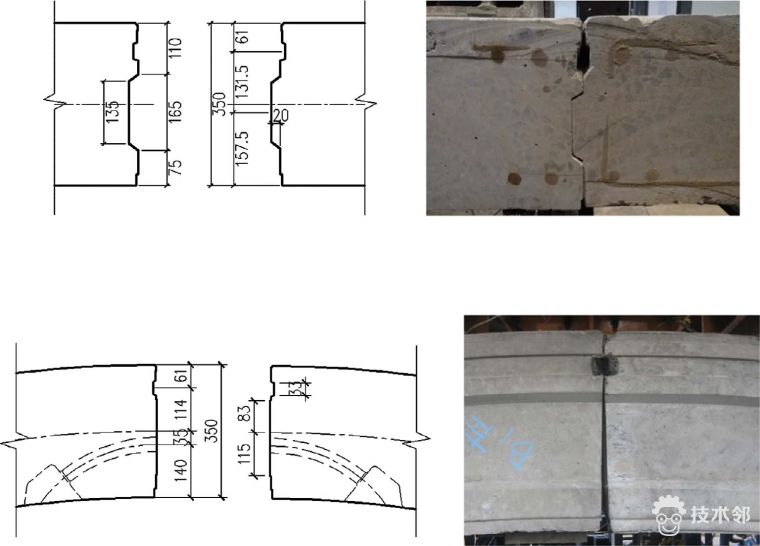
材料准备完以后要干嘛呢?当然是施加荷载与边界条件。
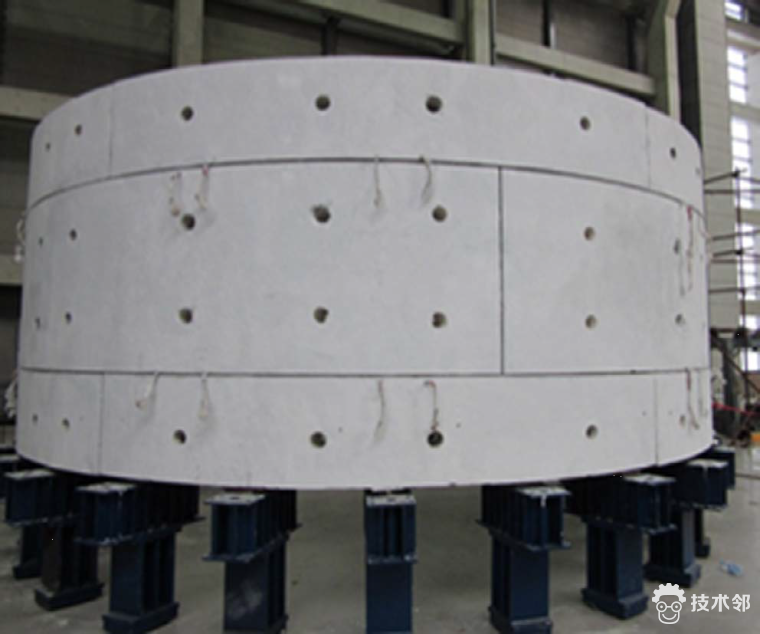
这里还是再次感叹一下某济实在是有钱,这种才叫试验室,我们学校的那叫啥?外荷载都是通过传力杆进行模拟,当然施加在管片上的液压千斤顶的推力也不可以忘记哦!!!
荷载施加那部分总觉得写得怪怪的,但是将卸荷力进行归一化值得在论文中借鉴:To facilitate the description of loading grade below, the relative load p is defined as p= (P1-P2)/Pn at each loading step, which represented the degree of unloading compared to the normal working condition. And the generalized load P is defined as P= 2× (P1-P2) at each loading step, which represented the difference between loads at the top and at the sides of the tested segmental lining.力的步骤设计完以后就是布置测点,这里作者写了需要测试的四个量
(1) The displacement of the surrounding structure in the radial direction 径向位移
(2) Internal structural force 内力
(3) Bolt stresses at joints螺栓接头张拉应力
(4) Joint open 接头张开量
(5) Joint dislocation错位量
话说市政院的总工写过一篇文章《错缝拼装下管片宽度对盾构隧道力学行为的影响》是通过有限元方法比较梁弹簧模型与壳弹簧模型的数值分析计算结果。上图:
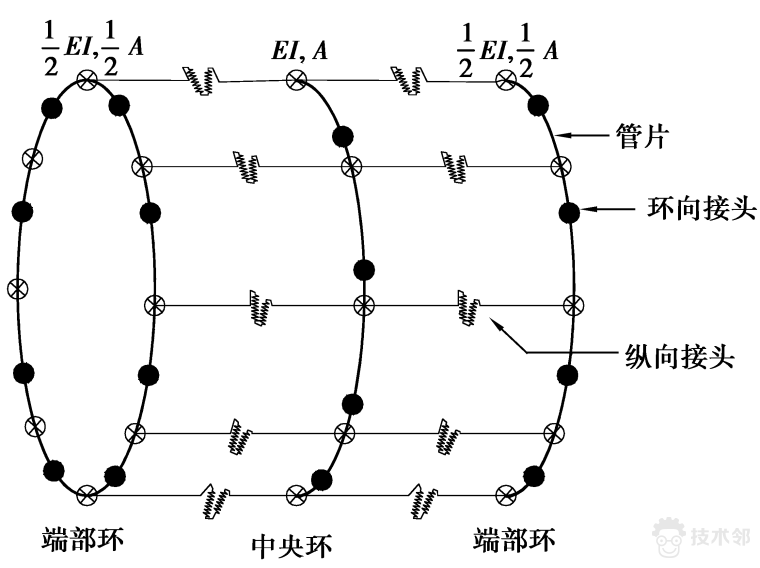
梁弹簧模型
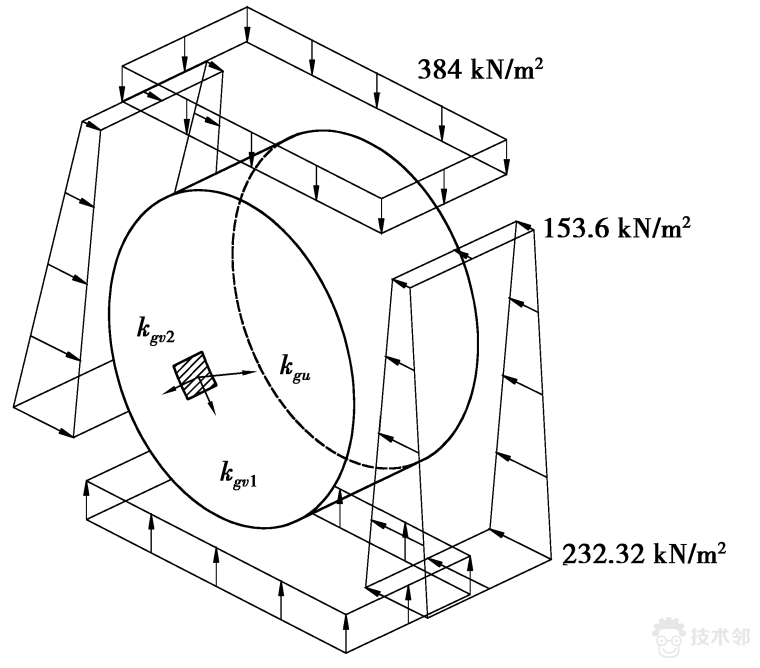
壳弹簧模型
弯矩的分布:
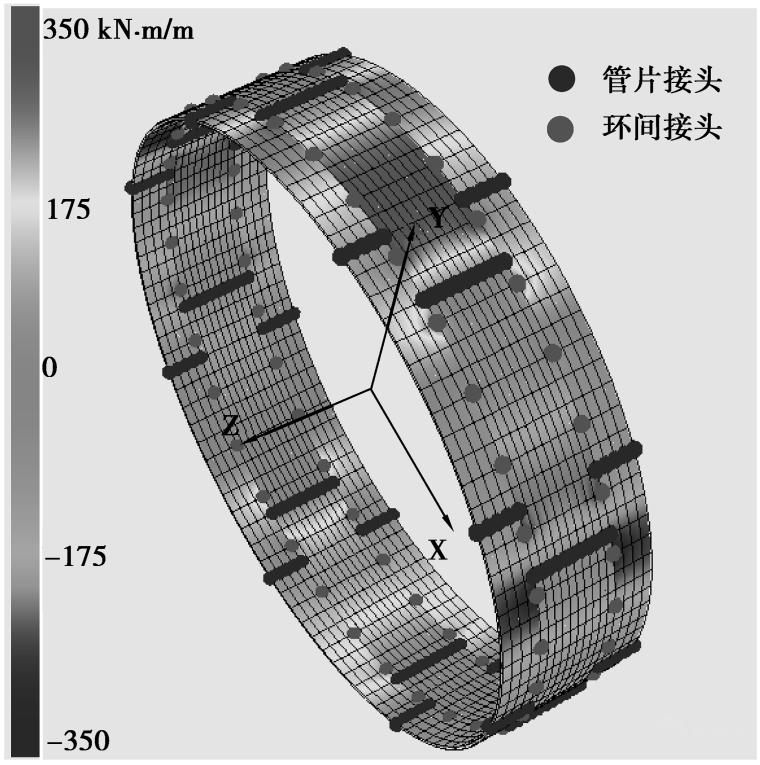
从上图看不出来是用什么有限元软件做的,但是如果是ABAQUS的话模型就非常好实现,建模要点:最主要是模拟管片接头与环向接头,还有地层三个方向的弹簧,通过接触单元来定义。管片接头与环向接头首先定义两两接触点,再根据具体的方向与受力特性施加弹簧,而接地弹簧也是先要通过定义点来完成。
免责声明:本文系网络转载或改编,未找到原创作者,版权归原作者所有。如涉及版权,请联系删